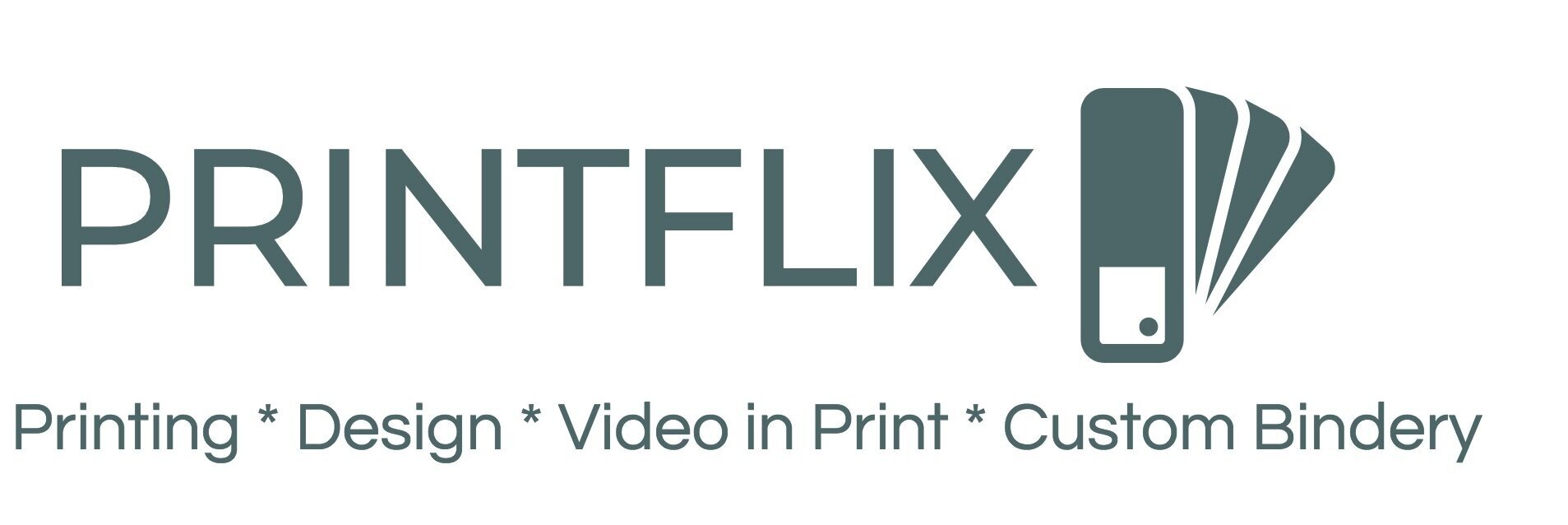The Mob Museum, also known as the National Museum of Organized Crime and Law Enforcement, sought out Printflix to create a genuine keepsake that would provide customers with a virtual walk-through of their 42 million dollar attraction. The initial idea was to create a simple, 6 X 9 casebound video book that would reveal images off some of the world's most notorious gangsters on the interior left panel of the book (that's the panel visible after opening the front cover) and a small video player on the right. The video player would play selected clips that traced the evolution of organized crime in America from the Industrial Revolution through today.
The idea took on a whole new dimension when Printflix proposed a new, never before seen concept. A book that would contain a series of thin pages, with a square die-cut in the middle of each page and a tiny die-cut hole at the bottom. The holes were designed to let in light for each active page being read by the user. Behind each hole was a super-sentive sensor able to discern minute changes in light and would act as a on-off trigger. As each page was turned, the array of light sensors would activate a unique video consistent with the surrounding text and graphics depicted within each spread. The end product would simulate the museum experience by providing readers with a blast of video relevant to each era of organized crime, similar to the way the museum organized its content for each visitor.
STEP 1-PROTOTYPE, PROTOTYPE, PROTOTYPE
We began by making prototypes with crude paper and chipboard samples incorporating the essential electronics to determine sensor placement and die-cut sizes. When we set the firmware controlling the sensors to maximum sensitivity, any light that wasn't effectively blocked by the pages over each page sensor would cause unwanted video activations. We persistently played with the size of the die-cut holes and the sensitivity of the firmware to create the proper balance of incoming light to sensor sensitivity.
Step 2-RESEARCH AND CREATIVE- THE PAGE DESIGN AND LAYOUT
The creative objective of the project was to demonstrate the evolution of organized crime in America so we mirrored the museum's experience through our page design. The reader would begin the journey at the turn of the 20th century when immigrants flooded into the country and end with a brief mention of the state of organized crime today. Similar to the museum, pages would be organized by key events serving as defining points for each era. These chronological events would allow for a simple and seamless page navigation. We soon realized that this was a daunting task given the museum had an entire, multi-story building to achieve this goal and we had 20 pages. Condensing more than 100 years of history into 10 spreads or 20 pages required a good deal of research and editing. By the end of the project, our team had sifted and sorted through thousands of archival images, documents and graphics to create the fundamental design of the book. It bears mentioning that we were fascinated and inspired by the quantity and quality of the rare historical content provided by the museum opening up it's vast archives to us for this project.
STEP 3-CREATING THE VIDEOS THAT POP ON BETWEEN PAGE TURNS
Given the speculative nature of this project and the novel way we were telling the museum's story through print and video assets, by default we had to produce the matching videos for each page spread. It was apparent that a seamless pairing of print and video media would require a collaborative effort between graphic designers and video technicians. The creative goal was to create a tight, seamless integration between print and video design always making sure that the two mediums would be balanced and complementary. We didn't want the pages to merely be activation devices for each video. Instead, we determined that the page design should introduce each new era through eye catching colors and graphics with minimal text while the videos would fill in the remainder of the story. It was essential that graphics and image assets would be duplicated within each section of the book so there would be a consistent look and feel. More than 20 hours of new video footage was shot on location, principally at the museum to be used as part of the raw materials in the final video assembly. Original materials would not violate any copyright concerns and help defray licensing fees on the project.
STEP 4-TYING IT ALL TOGETHER
As we neared the final stages of the project, we had a wide assortment of excellent, finished materials and the final product was really taking shape. Yet, there was clearly something missing.We determined that what we had created to date was was more a collection of media assets than a consistent, well-formulated story. We needed a continuity device that would effectively blend all of our disparate designs and videos together. After much debate, we determined that the perfect way to do this would be to add former mayor of Las Vegas and principle visionary of the Mob Museum, Oscar Goodman to the project. Mayor Goodman was not only intimately involved with museum and it's scholarly mission to archive and present the history of organized crime and prevention, he was a seminal figure gaining renown as council to Anthony " The Ant" Spilotro, the crime boss played by Joe Pesci in the movie Casino.
Mayor Goodman graciously agreed to provide voice-ver narration and an on camera appearance on two separate occasions providing the glue we needed to bind the creative content together.


